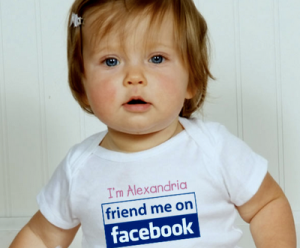 It will come as no surprise to anyone who has worked with kids to know that researchers have found a correlation between kids spending time on Facebook and alcohol and drug use.
It will come as no surprise to anyone who has worked with kids to know that researchers have found a correlation between kids spending time on Facebook and alcohol and drug use.
It just makes sense. So much of what kids are doing online is a public performance of their digital personas, their “second selves” (as researcher Sherry Turkle has famously described it). It can be exhausting and stressful, but kids put an awful lot of effort into meticulously curating and refining their public face on social media: who their friends are, who comments on their walls, which pictures of which parties appear on their profiles, which brands and bands they “like,” etc.
And a significant amount of this for many kids involves posting pictures or making comments about drinking and drugs. A quick search on YouTube reveals countless videos of kids high on various substances, drunk or experimenting with other high-risk activities from car surfing to the choking game. These images and references have become a significant part of pop culture for our kids.
And since only 39% of parents say they are actively monitoring their kids’ activities online, the rest seem to be posting whatever they want without supervision.
As a parent, this is a huge wake-up call. Our kids are getting online younger and younger — a new study of 4,000 U.S. parents found 53% of their kids were on Facebook or Twitter by age 11. And the things they are exposed to are difficult to explain or control. Once something is seen, you can’t un-see it.
Another study by the National Center on Addiction and Substance Abuse at Columbia University found that teens who use Facebook and other social media outlets are five times more likely to smoke cigarettes, three times more likely to drink alcohol and twice as likely to smoke pot than teens that don’t use social networks.
Now since correlation doesn’t imply causation, the researchers decided to go a little bit further in trying to find the source of influence. They looked at kids online who were exposed to images and videos of kids getting drunk or using drugs. It makes sense that seeing these things works to normalize this kind of behaviour – as if drinking and drugs are just part of being a teenager.
What they found is that 40%of kids online see pictures of kids drunk, using drugs or passed out when using social media sites, compared to 14% of kids who don’t use social media.
Half of the social media users who saw such pictures reported seeing them before they were 13 years old.
So it sort of follows that this exposure is connected to patterns of use. Kids who report having seen these kinds of images are
- Three times likelier to use alcohol;
- Four times likelier to use marijuana;
- Four times likelier to be able to get marijuana, almost three times likelier to be able to get controlled prescription drugs without a prescription, and more than twice as likely to be able to get alcohol in a day or less; and
- Much likelier to have friends and classmates who abuse illegal and prescription drugs.
So what should parents do? Despite the new technologies, the recommendations follow the same kind of advice parents have always gotten about risky behaviours, with a high-twist:
- Start talking to your kids about smoking, drugs and alcohol when they are young. If you wait until ages 11 or 12, someone else will have beaten you to it, and there’s no guarantee the information they passed on was correct.
- Clarify your family values about these activities from the time they are young.
- Model responsible use yourself. Your kids are watching carefully.
- When you do allow your kids online, take steps to monitor their accounts carefully. It is not enough to friend them online. You must also have their passwords (at least until they are old enough to demonstrate consistent, responsible behavior). You must help them set their privacy controls. You must log in with them regularly to monitor what they are doing and what their friends are saying. If you don’t know how to do this, find another trusted adult who can help be a part of this supervision.
- You should regularly review the browser histories.
- Keep up a regular dialogue about the things they are seeing online.
- Keep an eye out for warning signs of alcohol or drug use.



